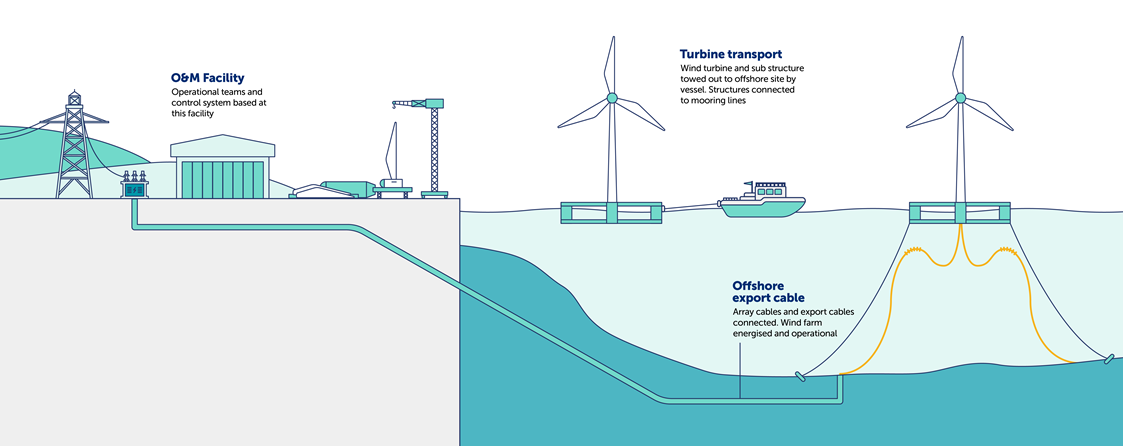What is Floating Wind?
Floating wind is a form of renewable energy technology that harnesses the power of the wind at offshore sites where conditions are more favourable and reliable. Wind speeds are higher, more consistent and less obstructed, allowing for greater efficiencies than typical fixed bottom wind farms.
Floating wind turbines do not have a fixed foundation structure penetrating the seabed. Instead, floating wind turbines are held in position by a system of mooring lines which, in theory, can have unlimited length and eliminate the depth constraints of current offshore wind. The mooring lines ‘anchor’ the structure to the seabed, reducing surface movement and improving stability. This makes floating technology more suited to development in deeper waters.
A key advantage of many floating structures is that they can be towed to their installation location, eliminating the need for the expensive crane vessels which have come to dominate fixed bottom offshore wind.

The very first offshore wind turbines used technology adapted from the onshore wind industry with cylindrical monopile foundations driven into the seabed, similar to those at our operational Greater Gabbard Wind Farm and our Dogger Bank Wind Farm project which is in construction.
As developments moved into deeper and more complex sites, the cylindrical monopile foundations were replaced with lattice ‘jacket’ structures similar to those used in many oil and gas facilities. These types of foundations can be found at our operational Beatrice Offshore Wind Farm and our Seagreen Offshore Wind Farm project.
However, with over 80% of global wind resource in areas beyond the reach of conventional jacket foundations, floating wind technology will allow us to deliver the full potential of the next generation of offshore wind.
In the following short film Brian McFarlane, Head of Offshore Development, talks about floating wind and its significance in helping meet net zero targets.

